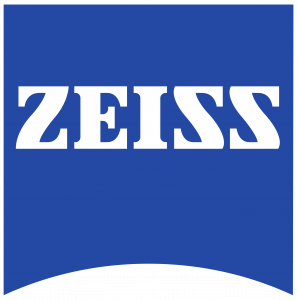Additive manufacturing offers unique possibilities in prototype manufacturing and in the development of innovative components. 3D printing is already being used profitably in many industries, and the technology is being used increasingly in automotive engineering and aviation. In order to use the possibilities of additive manufacturing successfully, you have to know the process in detail. From the idea to the construction and design, the technology selection and application, the materials as well as post-processing and quality assurance: These skills are important basics that you can learn in our online additive manufacturing courses.
Our portfolio of online courses and online learning content on additive manufacturing covers a wide range of topics. We explain the essential differences between subtractive and additive manufacturing and present manufacturing processes for the most important polymer-based and metal-based materials in the training courses. In the form of in-depth chapters, we also teach the most important project steps in the additive manufacturing design process. In the online courses, with the help of tutorials, participants learn everything about technology selection, the design process and quality assurance measures before, during and after the production process. Our portfolio of online learning content is the starting point for creating tailor-made training courses for your company and your employees. The content in this area was created with a number of companies and institutions such as DMG-Mori and ZEISS.
Our cooperation partners
We offer content that was developed with experts from various companies and institutions in the field of Additive Manufacturing. Here are some examples of the contributing partners and experts:


We cover the following themes with our portfolio:
What basic knowledge about additive manufacturing can my employees acquire?
- Importance of additive manufacturing
- Differentiation between additive manufacturing and subtractive manufacturing
- New possibilities through additive manufacturing
- Areas of application for additively manufactured components
- Advantages of additively manufactured components
- Technologies and materials used in additive manufacturing
- Manufacturing costs of additively and subtractively manufactured parts
What should my employees learn to be able to use additive manufacturing in their area of activity?
- Component properties
- New possibilities for the design and construction of components
- Changing the mindset of developers and designers to make the best use of new possibilities
- Design criteria to consider
Which technologies do my employees need to know to be able to make informed decisions?
- Polymer Additive Manufacturing
- Resin-based: stereolithography (SLA)
- Powder bed fusion: material jetting (MJ), multi jet fusion (MJF), selective laser sintering (SLS)
- Binder jetting (BJ)
- Extrusion: fused deposition modeling (FDM)
- Metal-based technologies: selective laser welding, electron beam melting, nanoparticle jetting
What do my employees need to learn about the materials used?
- Properties of the materials used for the components
- Constructive measures to create completely new properties and functionalities
- Hidden dangers of material defects in additively manufactured components
What do my employees need to learn about quality assurance measures in additive manufacturing?
- Detection of material defects in additive manufacturing
- Prevention of material defects in additive manufacturing
- Measurement methods along the additive manufacturing process
- Methods for monitoring material properties and quality features of the manufactured components
What do my employees need to know about the post-processing of additively manufactured components?
- Why no additively manufactured component comes finished out of the machine
- Post-processing options
- Coating
- Grinding
What should my employees learn in order to use additive manufacturing economically in an industrial environment?
- Critical quantities
- Transfer of knowledge from prototype construction to series production
- Construction costs when using different technologies
- Make or buy: At what point it is worth building up production capacities
What do my employees need to learn in order to understand which production steps are necessary in additive manufacturing?
- Integration of additive manufacturing into the company’s PLM
Our portfolio is the basis for:
- Programs for specific companies and target groups based on preconfigured courses
- Courses that we configure and combine granularly from existing content according to your needs
- Programs that use a combination with your company's own content
Have a look at some content examples from our offering:
Online Course Additive Manufacturing
Additive Manufacturing Process | DE/ENG | 4 Chapters | approx. 1h
In Additive Manufacturing Process, you will learn about additive manufacturing, its advantages and challenges. The insight into some selected additive manufacturing processes such as selective laser melting (SLM) or fused deposition modeling (FDM) is deepened by practical examples from DMG Mori and the vocational college, Kreis Höxter. In an action-based Challenge, learners are guided through the additive manufacturing process.
Practical Example: Selective Laser Melting | DE/ENG | 1 Chapter | approx. 1/4 h
Practical Example: Selective Laser Melting shows how selective laser melting (SLM) works using the Lasertech 30 SLM from DMG Mori.